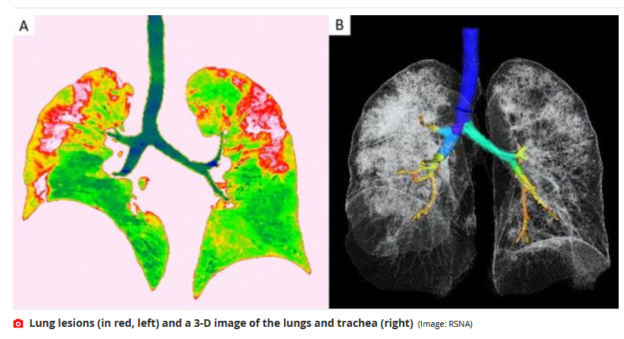In “The Open-Border Fetish Is Turning Into A Symbol Of Death,” a March 14 COVID column, published first by American Greatness, I had already preempted Axios in assembling the sources that allowed me to deduce that the Trump travel ban was well, quite pitiful.
The first U.S. “Proclamation on Suspension of Entry, as Immigrants and Nonimmigrants, of Persons who Pose a Risk of Transmitting 2019 Novel Coronavirus” was signed into law on Jan. 30. It went into effect only on February 2.
Reports from our nation’s airports, however, told of chaotic attempts to reroute passengers to 11 designated U.S. airports, for the purpose of screening that was as “enhanced” as temperature checks and a reliance on the “honest” say-so of the arrivals.
At the time, no restrictions had been placed by the United States on arrivals from other COVID-19 hot zones. Passenger screening from source countries like Italy was slack, to put it mildly.
The government’s latest travel ban on Europe is welcome. Via the National Pulse:
“[S]ubject to conditions on the ground … travel from Europe to the United States will be suspended for 30 days. These restrictions will not apply to the United Kingdom.”
Alas, while it is true that the UK “is not part of the EU’s open-borders zone,” it has however—and as reports on terra firma suggest—been allowing any and all to enter from Europe practically unchecked.
Put it this way: An officer “briefly pointing a thermometer gun at your forehead or watching as you go by for signs of a cough or difficulty breathing” does little to stop the virus from spreading. In fact, as a correspondent for Science magazine avers, “It’s exceedingly rare for screeners to detect infected passengers.”
Belatedly, the United Kingdom was added to America’s iffy travel ban, but the meaningless screening protocol was the same.
From the fact that the Democrats would have done nothing to stop the flood of visitors carrying WuFlu from China—it doesn’t follow that the Trump administration did a good job. It didn’t. Better than nothing is not something the American people should be thankful for.
As to the numbers that flooded in under the much-hyped travel ban on China: “There were 1,300 direct flights to 17 cities before President Trump’s travel restrictions. Since then, nearly 40,000 Americans and other ‘authorized’ travelers have made the trip, some this past week [April 4] and many with spotty screening.”
Confirmation (and better article accessibility) came, April 5, 2020, from Reuters (although, minus the astounding numbers, I had reported this on March 14, well before the malfunctioning media, after following the facts back then):
… the administration took a month from the time it learned of the outbreak in late December to impose the initial travel restrictions amid furious infighting.
During that time, the National Security Council staff, the state department and other federal agencies argued about everything from how best to screen for sick travelers to the economic impact of any restrictions, according to two government officials familiar with the deliberations.
The NSC staff ultimately proposed aggressive travel restrictions to high-level administration officials – but it took at least a week more for the president to adopt them, one of the government officials said.
In meetings, Matthew Pottinger, deputy national security adviser and a China expert, met opposition from Treasury Secretary Steven Mnuchin and National Economic Council director Larry Kudlow, said two former NSC officials and one of the government officials involved in the deliberations. The two top aides were concerned about economic fallout from barring travelers from China, the sources said.
Each day that the administration debated the travel measures, roughly 14,000 travelers arrived in the United States from China, according to figures cited by the Trump administration. Among them was a traveler who came from Wuhan to Seattle in mid-January, who turned out to be the first confirmed case in the United States.
Early, too, was I to expose, on March 13, the tragedy of the Index Patient. “From Wuhan to Washington State With ‘Love’” followed the nerdy writings of the RNA sequencers. RNA doesn’t lie:
Writes Trevor Bedford, a sequencing scientist at the Fred Hutch Research Center: “The first case in the USA was … from a traveler directly returning from Wuhan to Snohomish County on Jan. 15.” But there was another traveler whose virus was related to that of Patient Zero, and who had,
“exposed someone else to the virus in the period between Jan. 15 and Jan. 19, before they were isolated. If this second case was mild or asymptomatic, contact tracing efforts by public health would have had difficulty detecting it. After this point, community spread occurred and was undetected due to the CDC’s narrow case definition that required direct travel to China or direct contact with a known case to even be considered for testing. This lack of testing was a critical error and allowed an outbreak in Snohomish County and the surroundings to grow to a sizable problem before it was even detected.” [Emphasis added.]
Colleagues confirm that the “genetic diversity of the Washington State outbreak … suggests a scenario in which an individual infected [from] Washington State travelled to California, and, in particular, to the Grand Princess cruiser, instigating a chain of transmission there. The viral strain from a patient infected on the cruise ship off the coast of California is similar to the cluster circulating in Washington state.”
If only travel from China had been stopped earlier, the poor old people from the Life Care home might be alive, and the coronavirus would not be multiplying exponentially among us.
The New England Journal of Medicine had written extensively about the Index Patient here:
“First Case of 2019 Novel Coronavirus in the United States.”



 print
print